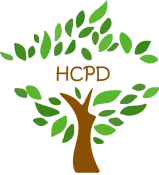The Pringle Brothers & The Sycamore Tree
by Joy Gilchrist
John and Samuel Pringle lived on the South Branch of the Potomac River in what is now the Eastern Panhandle of West Virginia when they enlisted in the army and served in the British Garrison at Fort Pitt during the French and Indian War. In 1761, unhappy with life at the fort, they left the fort without permission. William Childers and Joe Linsey went with them. The four deserters wandered in the wilderness around the Monongahela and Youghiogheny Rivers. In 1762 they went to Looney’s Creek where Childers and Linsey were captured.
The brothers escaped and eventually were employed by John Simpson, trapper and trader. They were with him until 1764 when an argument at the Horse Shoe Bend on Cheat River caused them to part company. Simpson continued to the headwaters of the Elk River, at the site of present-day Clarksburg, West Virginia, and remained until permanent settlements began to disturb his hunting and trapping; he then may have gone to Kentucky. John and Samuel Pringle followed the Tygart Valley and reached the Buckhannon River country and Turkey Run.
They took up residence in a sycamore tree and lived there until Fall 1767 when John went back to the South Branch and learned that the war was over and that they were no longer wanted as deserters. After some delay, he returned to the sycamore tree (now known as “Pringle Tree”) with the good news. The brothers returned to the South Branch River valley and told their story.
Among those hearing the story were William and John Hacker, Alexander and Thomas Sleeth whose sister, Margaret, had become John Hacker’s wife, John Jackson and his sons, George and Edward, Thomas Hughes (pictured at left) and his son Jesse, John and William Radcliff and John Brown. They decided to go across the Alleghenies and see this fertile valley first hand.
In the fall of 1768 some of the above-mentioned men were led by Samuel Pringle on the arduous journey across the mountains. They decided to settle there along the waters of the Buckhannon and began to claim their lands. Winter was closing in. After a short stay, they party decided to return to the South Branch and made plans to come back in the spring to clear land, plant corn, and prepare to bring their families. They returned in the spring of 1769 by following the trail previously cut by John Pringle. The group divided themselves according to interests – homeseekers and hunters.
John Hacker, the Sleeths and Jacksons were in the first group, the rest in the second. While the homeseekers began improving land, the others kept them supplied in meat and explored the countryside. During their explorations, they discovered the West Fork River and Hacker’s Creek.
Shortly after the land clearing started, Samuel Pringle arrived with another band of pioneers including John and Benjamin Cutright. Upon their arrival, John Hacker learned that the land he had chosen (some of the land is included in present-day Heavener Cemetery at Buckhannon) and started to clear was already that of Samuel Pringle. to save problems, John agreed that Pringle could have the land if he (Pringle) would clear an equal amount on a creek which had recently been discovered by the hunters. Thus, John Hacker came to be the first settler in present-day Lewis County and the creek became known as Hacker’s Creek.
Crops planted, land cleared, and shelter erected, the men went back to the South Branch to their families. They returned in the fall to harvest their crops and found them eaten to the ground by the buffalo. This destruction delayed the migration of the families until 1770.
With the coming of these early pioneers, the settlement of the valleys of the West Fork River and its tributaries was begun. Although their settlements would be broken up by Indian incursions from time to time and land claims would not be recognized by the Virginia government until 1781, migration to what would be the centraL West Virginia area had begun in earnest; and, they started it all.
Update:
Information about this tree is included on the history website: CLIO.com. Besides history about the tree, you will find directions to visit and photographs.
link: Pringle Tree Park information on CLIO.
Straley, Steven Cody, Jared Chipps, and Clio Admin. “Pringle Tree Park.” Clio: Your Guide to History. October 12, 2018. Accessed April 13, 2021. https://theclio.com/entry/966

